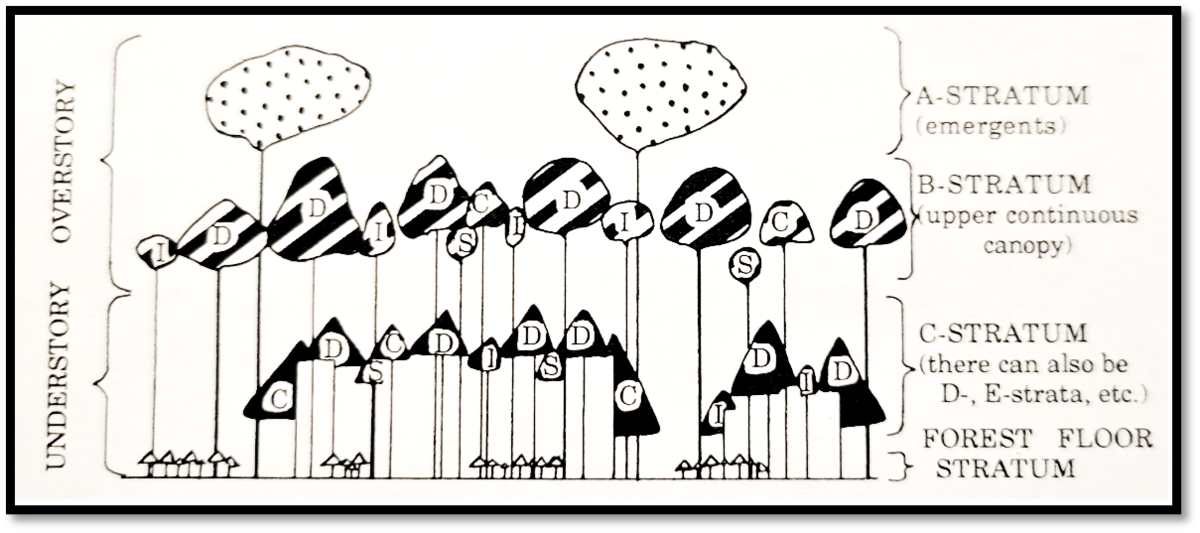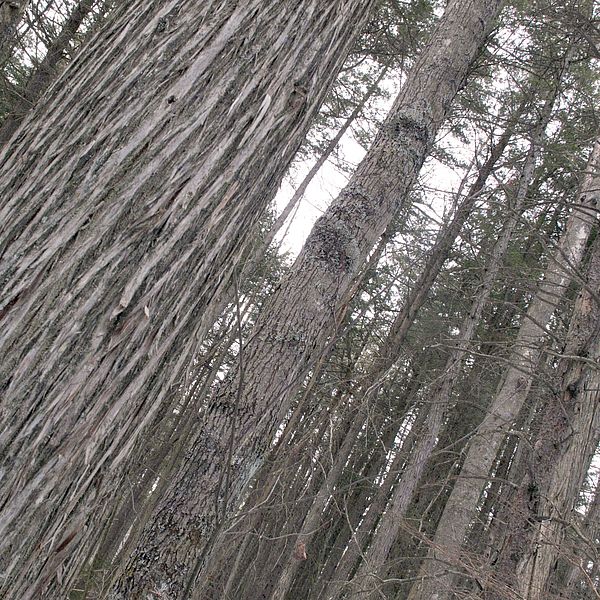Stand Development in Transition Hardwoods
Much of the area served by Mount Grace falls in territory often mapped and labeled as “transition hardwoods.” The idea is that species typical of “northern hardwoods” and those typical of “central hardwoods” frequently intermix in the forests of this area. The oaks, hickories and black birch are examples of central hardwoods reaching to the northern and eastern limits of their range, while yellow birch, sugar maple, and beech are typical of the northern hardwoods. And, of course, good old red maple is everywhere all the time.
Many factors account for the exact species composition of a stand, but soil type, aspect, and disturbance history are very important. One of the common subtypes in the transition hardwoods is red oak-black birch-red maple. These stands will usually have other species, including white pine, hemlock, and a few other hardwoods, but the named species are usually dominant numerically and their growth dynamics define the stand’s trajectory. Over the course of decades, this subtype tends to develop what is known as a “stratified” structure. The representation below, from Oliver and Larson’s book Forest Stand Dynamics, shows the concepts of stratum and crown class, which are different.
A stratum in a mixed-species stand is a distinct horizontal layer within the stand, developing from the combination of species growth tendencies and site factors. Crown class [suppressed (S), intermediate (I), codominant (C), or dominant (D)] results from overall competition within the stand and stratum.
The characteristics and strategies of the three main species in the subtype explain the progression and development of a stratified stand, with the oak eventually dominant:
- Red maple – shade tolerance medium; frequent and prolific seed crops; vigorous sprouter; capable of becoming established on a variety of seedbeds; can survive and grow on very wide range of soils and microsites; early development tends to favor height growth; medium twig toughness.
- Black birch – shade tolerance medium, able to take advantage of very small openings in the forest; prolific seeder, seed very light and able to travel well; can take advantage of litter and organic seedbeds; very rapid early height growth and can thrive in high density patches; favors shoot growth over root growth in early decades; twigs delicate.
- Red oak – shade tolerance medium; seed crops irregular, but common; can establish on mineral soil and leaf litter seedbeds; vigorous sprouter; can tolerate repeated browsing and fire; often favors early root system development over height growth; strong and thick twigs; weak “epinastic control”, resulting in strong growth of side branches.
The “classic” red oak-black birch-red maple stand will have many more birch and maple stems per acre than oaks through the sapling and early pole stages. Fast forward three to five decades and the oaks will have emerged at the top, their spreading crowns forming a distinct stratum. (There may be an even taller white pine stratum, often of scattered individuals.) How did this happen?
On a given site, Species A will have a general pattern of height growth, which will slow at a particular point, resulting in the formation of a stratum. Species B may have a different general pattern of height growth, which will slow, but it may be at a different age and height than Species A on certain sites. In the case of the red oak-black birch-red maple subtype in the North Quabbin, black birch and red maple often sprint for the sky in the sapling and pole stages. Red oak lags, but eventually overtakes the birch/ maple stratum and emerges above. Early investment in a strong root system and the ability of stout twigs and branches to abrade the crowns of competing birches and maples is an effective combination for red oak in this species mix.
What are the implications of this for woodland owners and managers? If a goal is to favor red oak and if it is present in a young stand, it may not be necessary to “do something” to ensure the long-term success of the oak. The paucity of oak regeneration east of the Mississippi is frequently cited as one of the greatest problems in hardwood management. But before deciding that this is a problem in any particular stand, it’s important to look quite carefully: oak is often present in the understory even if it seems to be lacking. Only 50 to 60 oaks per acre need to emerge above the birch-maple stratum as crop trees.
Of course, all the qualifiers apply: the stratification is never as tidy as described or pictured. Other species are out there; stand disturbances and history vary.
Homework
Find a couple of stands, ideally of different age/size, where the three subtype species are present. Spend some time looking at the structure. Are there distinct horizontal layers? Do you know, or are you able to figure out, some of the stand history? Does it seem like one or more species are doing well or poorly? Try to ungrow the stand and imagine what it might have looked like 20 years ago. How do you think it’s likely to look 20 years from now?
Charlie Thompson is a retired forester, member of original board of Mount Grace, current board member of MA Forest Alliance, co-author of Working with your Woodland and More than a Woodlot. He is a woodlot owner in MA and VT.


